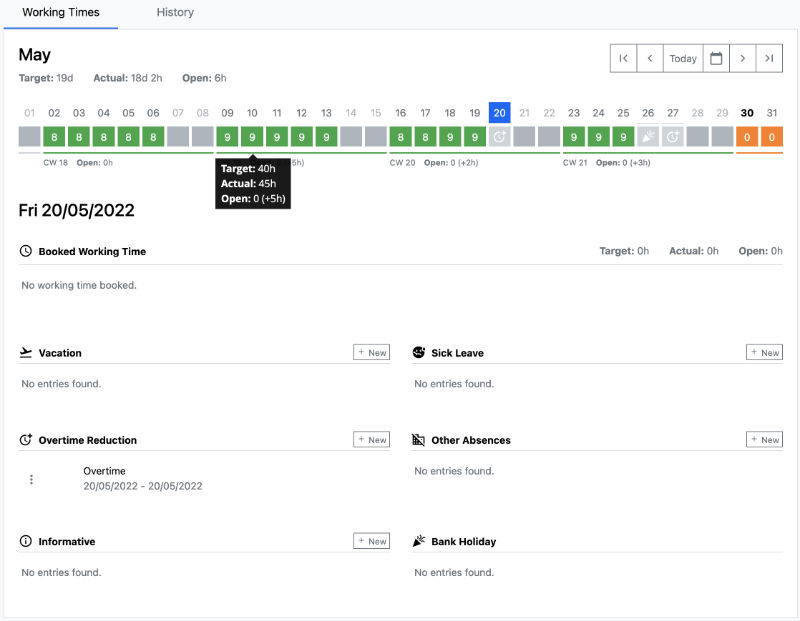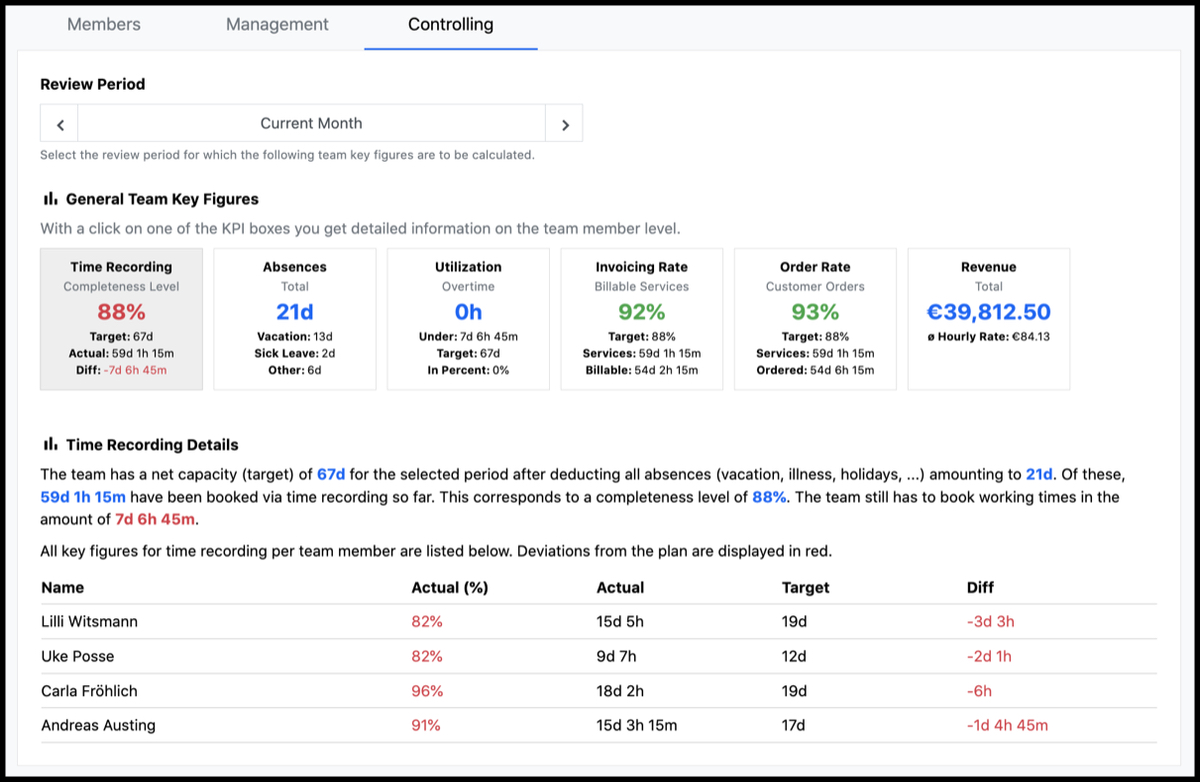If you ask yourself what makes a successful team, you won't find the answer in the key figures for capacity utilization or profitability. Rather, it is about aspects such as trust in the team, the reliability of the employees, the security provided by clear structures, and the meaningfulness and significance of the activities.
If you create a good environment for these aspects as a team manager, it is also highly likely that the team will make a good contribution to the economic success of the company. This will be reflected in the team key figures if the organizational processes and rules are adhered to. To control the effect of these processes and rules, team KPIs can be a great help.
Challenge
There are some prerequisites to be able to provide reliable metrics:
- All working hours performed by the team members must be recorded in a timely and order-oriented manner.
- All absences of team members must be recorded in a timely manner.
- All working hours must be converted into order-related, billable services in a timely manner.
But this is precisely where problems arise again and again. Employees do not book their working times in time and the assignment of already booked working times to sales orders is often time-consuming and also delays the calculation of the key figures.
Solution
It is therefore important to keep the hurdle for all employees to record working times as low as possible. This is achieved on the one hand by allowing working times to be posted directly to the task that an employee is currently working on. In the case of Jira, this means that work log entries or Tempo working time bookings can be recorded directly at the task.
Furthermore, all working time bookings should be able to be directly assigned to an order and an service type based on the underlying project and certain properties of the task.
And last but not least, all absences of all team members should be available to determine the actual availability.
Jira Plugin and rule-based takeover of services
With the foreknown Jira Plugin, we ensure that all working time bookings from Jira can be transferred directly into foreknown and, with the help of a previously created set of rules, can also be assigned directly to sales order items and service types. This means that not only the working hours, but also the resulting monetary equivalents are directly available for evaluations and for the calculation of team-related KPIs.
Record Absence Times
Absences due to vacation, sick leave, overtime reduction, and other types can be recorded by the employee themselves or by a team manager.

In this way, the actual working time to be recorded can be determined for each employee and for the entire team. This figure forms the basis for team controlling.
Team Controlling
As a team manager, you will find six important key figures in the detailed view of your team under the "Controlling" tab, in order to be able to better evaluate the economic success of your team.

All metrics described below are calculated both at the team level and for each individual team member in the detailed view.
Time Recording - Degree of Completeness
As mentioned above, it is important that all team members post their working times promptly and completely. This key figure provides information on the degree of completeness of time recording for a selected period. This means that incomplete time recording can be quickly identified and individual team members can be made aware of incomplete time recording.
Absences
In order to be able to evaluate what a team can and could actually achieve in a selected period, it is important to also have an overview of all absences due to vacation, sick leave, overtime reduction or for other reasons. This also makes it easy to identify increased sick leave, for example.
Utilization
A team manager must also ensure that all team members are not under- or over-worked. Therefore, one should keep an eye on both under- and overtime. Both factors can have a negative impact on the motivation of the team.
Invoicing Rate
The invoicing rate describes the proportion of an employee's booked working hours that could be converted into billable services. In foreknown, a planned billing rate can be stored as a target agreement in the employee contract. This results in an average invoicing rate for a team. If the planned value is reached or even exceeded, this represents a success for the team.
Order Rate
The order rate describes the proportion of an employee's booked working hours that could be transferred to customer order-related services. This takes into account the situation that there are employees who cannot work 100% on customer orders due to other activities. A shortfall in the order rate thus shows that the team spends more working hours on internal orders than planned.
Revenue
This metric shows the team's revenue and also calculates a resulting average hourly rate for the team. These key figures provide information on how strongly a team has contributed to the company's revenue.
Conclusion
These metrics provide team managers with many important insights to better evaluate the profitability of a team and the impact of organizational measures. With foreknown, these metrics are available quickly and easily, allowing team managers to focus more on optimizing the real success factors of a team.

